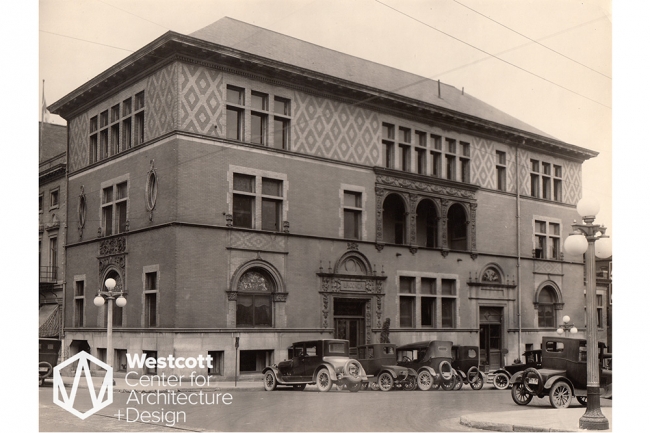As quirky as it is elegant, the Lagonda building on the northwest corner of Spring and Main has long been cherished by the citizens of Springfield as an architectural favorite. Like many of the buildings downtown, this building is a tribute to the social practices of yesteryear, when men and women established social networks by joining card clubs, fraternal organizations, and charitable societies. The Lagonda building was commissioned by the members of the Lagonda Club, a men’s social organization founded in 1893. It was designed by Louisville architect Frank M. Andrews in 1895. The Lagonda Club was sadly short-lived, officially disbanding in 1922 when Springfield built its Country Club. The Lagonda building, however, remained a valued part of the downtown community by housing the Springfield Chamber of Commerce for a number of years.
What perhaps makes this Building such a beloved part of Springfield architecture, is its surprising artistic composition. The design of the building represents the Second Renaissance style, a 19th century movement which utilized design elements from the age of Italy’s High Renaissance, such as arches, columns, and domes. The clear horizontal divisions of the stories, the low roofline, the use of authentic materials, and the use of arches all represent the architect’s desire to achieve classical elegance. Of particular interest is the diamond-patterned brickwork of the third story, the effect of which is wallpaper-like appearance. In addition, the building is also inset with a number of symbolic characters, such as pairs of griffins, representing wisdom and enlightenment, and pineapples, the traditional symbol for hospitality. Observers can also find a pair of dragon-fish, a trio of cherubs, and an old man with a leafy moustache among the other characters seamlessly incorporated into the building’s design.
Just as the building’s symbolic elements represented the values and ideals of its founding members, the Lagonda Building itself represents the footsteps of Springfield’s social past.

